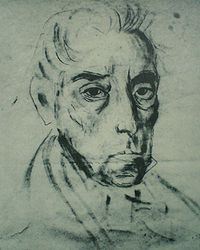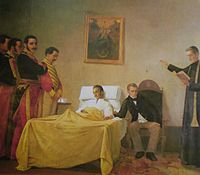Bolívar's dream had been to engender an American Revolution-style federation among all the newly independent republics, with a government set up solely to recognize and uphold the rights of the individual. This dream had succumbed to the pressures of particular interests throughout the region, which rejected that model and had little or no allegiance to liberal principles. For this reason, and to prevent a break-up, Bolívar sought to implement a more centralist model of government in Gran Colombia, including some or all of the elements of the Bolivian constitution he had written, which included a lifetime presidency with the ability to select a successor (although theoretically, this presidency was held in check by an intricate system of balances). This move was considered controversial in New Granada and was one of the reasons the deliberations, which met from April 9 to June 10, 1828. The convention almost ended up drafting a document which would have implemented a radically federalist form of government, which would have greatly reduced the powers of a central administration. Unhappy with what would be the ensuing result, pro-Bolívar delegates withdrew from the convention, leaving it moribund.
After the failure of this congress to write a new constitution, Bolívar proclaimed himself dictator on August 27, 1828 through the Decree of Dictatorship. He considered this as a temporary measure, as a means to reestablish his authority and save the republic, although it increased dissatisfaction and anger among his political opponents. An assassination attempt on September 25, 1828 failed, thanks to the help of his lover, Manuela Sáenz. Bolívar afterward described Manuela as Libertadora del Libertador (the liberator of the liberator). Although Bolívar emerged safely from the attempt, this nevertheless greatly affected him. Dissent continued, and uprisings occurred in New Granada, Venezuela, and Ecuador during the next two years.
Death
Saying, "All who served the Revolution have plowed the sea," Bolívar finally resigned his presidency on April 27, 1830, intending to leave the country for exile in Europe, possibly in France. He already had sent several crates (containing his belongings and writings, which he had selected) ahead of him to Europe, but he died before setting sail.On December 17, 1830, at the age of forty-seven, Simón Bolívar died after a painful battle with tuberculosis in the Quinta de San Pedro Alejandrino in Santa Marta, Gran Colombia (now Colombia). On his deathbed, Bolívar asked his aide-de-camp, General Daniel F. O'Leary to burn the remaining, extensive archive of his writings, letters, and speeches. O'Leary disobeyed the order and his writings survived, providing historians with a wealth of information about Bolívar's liberal philosophy and thought, as well as details of his personal life, such as his long love affair with Manuela Sáenz. Shortly before her own death in 1856, Sáenz augmented this collection by giving O'Leary her own letters from Bolívar.
On January 2008, President of Venezuela Hugo Chávez set up a commission to investigate theories that Bolívar was the victim of an assassination. On several occasions, Chavez has claimed that Bolívar was in fact poisoned by "New Granada traitors". In April 2010, infectious diseases specialist Paul Auwaerter studied records of Bolívar's symptoms and concluded that he might have suffered from chronic arsenic poisoning, but that both acute poisoning and murder were unlikely. In July 2010, Bolívar's body was ordered to be exhumed to advance the investigations. In July 2011, international forensics experts released their report claiming that there was no proof of poisoning or other unnatural cause of death



